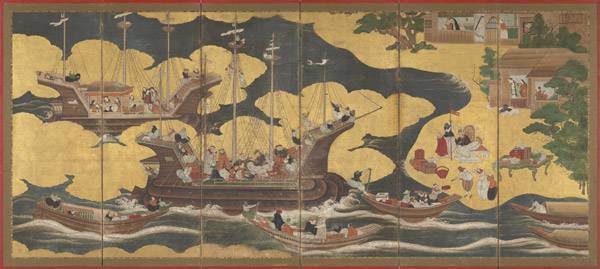
Donald Judd. “Untitled”. 1991. Enameled aluminum, 59″ × 24′ 7 1/4″ × 65″ (150 × 750 × 165 cm). The Museum of Modern Art, New York. Bequest of Richard S. Zeisler and gift of Abby Aldrich Rockefeller (both by exchange) and gift of Kathy Fuld, Agnes Gund, Patricia Cisneros, Doris Fisher, Mimi Haas, Marie-Josée and Henry R. Kravis, and Emily Spiegel. © 2019 Judd Foundation/Artists Rights Society (ARS), New York. Photo: John Wronn
Donald Judd at the Museum of Modern Art The Museum of Modern Art’s presents the exhibition ‘Judd’, on view in The Steven and Alexandra Cohen Center for Special Exhibitions in The David and Peggy Rockefeller Building from March 1 through July 11, 2020.]]>
Source: The Museum of Modern Art
”Judd” is the first full-scale introduction to the artist’s career for many viewers (including a generation born since his last American retrospective in 1988). It is organized in chronological order to demonstrate an artistic vision that developed in both methodical and utterly unpredictable ways.
The exhibition begins with a wide selection of paintings, objects, drawings, and prints from the early 1960s, bringing the viewer along on the step-by-step journey that led from paintings to works that were fully three-dimensional. In the mid-1960s, Judd created a fundamental vocabulary of works in three dimensions, including hollow boxes, stacks, and progressions made with metals and plastics by commercial fabricators. These are represented with the inclusion of their early—or even first—manifestations as well as significant ideas that were carried out in a few pieces and then laid aside. The 1970s gallery presents important changes to the work that in part reflect that Judd was re-centering his practice in Marfa, Texas, and working on site-specific pieces elsewhere. His experimentation extended to new levels of scale and types of structure, as well as to the introduction of plywood as a key material. The exhibition’s final gallery presents the aspect of Judd’s career least familiar to American viewers: the works from his last decade, mostly fabricated in Europe, whose chromatic and material exuberance emphatically contradicts the “Minimalist” label that Judd had always rejected.
Judd’s activity extended far beyond the realm of making works of art. He was a prolific art critic and essayist, deeply committed to democratic and environmental causes, and active in the fields of architecture and design. A “reading room” outside the exhibition entrance features Judd-designed furniture. Visitors will be invited to use the furniture and browse the exhibition catalogue, several key books on Judd’s work, and the artist’s own writings.
Related content
Donald Judd – Working Papers – Sprüth Magers London (exhibition, 2012)
Follow us on:


